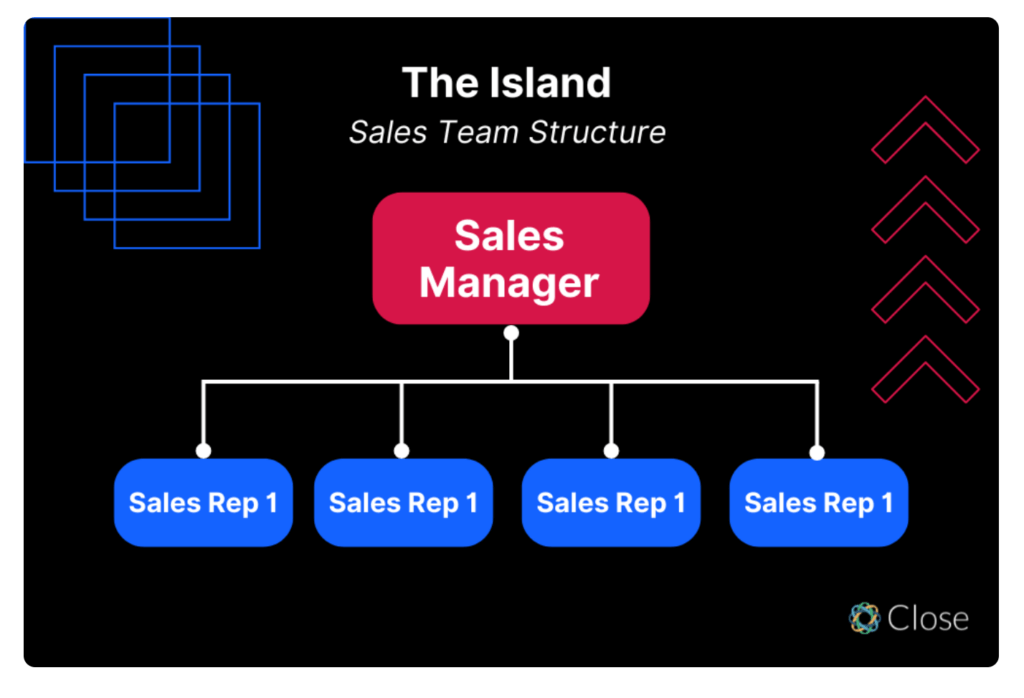Setting up sales team structures at startups is tricky.
“Going from (a sales team of) 1-100 is really hard,” according to David Baga, CRO of Lyft. “The struggle is constant and rewarding.”
It’s not as simple as hiring top sales talent and having them sell your product. There is much more involved than that.
You’re still establishing product/market fit, who your ideal audience is, and the best ways to reach them. You need to run experiments to identify what works regarding demand generation, outreach messaging, rep types, and sales team structure.
Further complicating matters, things continuously shift and evolve, making it necessary to adjust based on what you are learning in real time.
Design, track, and manage variable incentives with QuotaPath. Give your RevOps, finance, and sales teams transparency into sales compensation.
Talk to SalesYour startup’s sales structure selection affects all aspects of sales, including lead generation, conversion rate, and speed to close. And as conditions change along the way, it’s important to recognize when to adjust your sales organization. Otherwise, you risk sales stagnation and customer dissatisfaction.
So, if you’re trying to figure out the best sales team structure for your startup, we’ve got you covered.
Factors that impact sales team structures at startups
There is no one-size-fits-all sales team structure. Consider the following factors to build the best sales organization for your business:
Stage of growth
Your stage of growth influences your needs and requirements. Early on you’re still working through product/market fit and determining the best way to reach your ideal customer. Where you are on your journey can dictate available resources, staffing requirements, and your need for flexibility.
Product/service
The complexity and variety of your products or services influence your sales team structure and team member selection.
More complex or diverse products may require highly specialized sellers to ensure a greater understanding of what they are selling.
Sales motion
The length of your sales cycle and how you sell your product affect your sales team structure. A transactional sale involving only one buyer requires a different type of sales organization than a more complex sale to a buyer team that necessitates collaboration and communication for success.
Account sizes
Selling to enterprise accounts is different than selling to small businesses. So, it’s common to structure sales teams based on account size. This enables reps to better understand the needs, challenges, and concerns of their specific prospects and sell more effectively to them.
Geography/market/territory
Consider the geographic distribution of your customers and how you plan to designate territories. Sometimes, it makes sense to group customers by geography if in-person engagement is needed to sell your product. However, you can divide territories based on geography, company size, industry, or alphabetically.
The market you are in may influence the sales team structure as well. You may want to look at successful competitors to see what’s working for them. You don’t necessarily want to duplicate what they are doing, but you can use it to reduce the experimentation needed as you get started. Then, you can adjust it to suit your needs.
Budget
Budgetary considerations are a key factor. Sales team costs include salaries, commissions, training, and sales tech. And a bigger sales team isn’t necessarily better. Sometimes a lean, scrappy, cost-effective team allows you to evolve and scale your sales team more effectively.
Common sales team structures for startups
Now for some popular sales structures to consider:
The island
This sales structure, commonly used in traditional sales operations like real estate or financial services, gives sales reps minimal supervision. This sort of sales team includes a team of individual sales reps reporting to a sales manager. Sellers in this model are responsible for the entire sales process from lead generation to the close.
This structure is best suited for simple sales processes for products requiring one or two calls to close the deal. This structure has the potential to work in various industries but limits brand messaging control due to the inherent rep independence.
The assembly line
An assembly line sales structure got its name by imitating manufacturing. As the name would indicate, each rep on a team specializes in one aspect of the sales process and the team members report to the sales manager.
A team of this sort might include:
- Qualifiers, a.k.a. Sales Development Reps (SDRs)
- Closers, a.k.a Account Executives (AEs)
- Farmers, a.k.a. Customer Success Managers (CSMs)
As a lead advances through the sales process, the prospect is handed off to the next sales rep on the “line.”
This structure creates a predictable business flow, makes identifying issues and adjusting accordingly easier, and is efficient. As you’re getting started, the biggest challenge here is initially having an insufficient number of reps. To overcome this challenge, break up the sales cycle differently across the reps until you can expand your team.
The Pod
The Pod sales team structure is like the “assembly line” structure, but the entire team works collaboratively and communicates continuously instead of individual team members working in isolation. These pods are tight-knit groups that are customer-centric.
So, instead of SDRs competing within your organization, teamwork is developed within each pod, and individual pods compete with one another as your salesforce grows.
Pods tend to develop stronger customer relationships, and each pod can focus on a different customer type, product line, or geography. Plus, pods tend to be more flexible and adaptable as conditions evolve.
Team variations
The island, assembly line, and pod sales team structures can be further adapted to your specific requirements as follows:
Geography/Territory
This focus allows individual sales reps or teams to learn the nuances of their specific geographic area or territory. They develop stronger relationships with those in their area and gain a deeper knowledge of competitors in their assigned region.
Assessing rep performance based on the potential of their market can be easier in a geography/territory structure but can be isolating for individual reps functioning in an “island” type team structure.
Product/Service Line
A sales team structure based on product or service lines makes sense when diverse offerings exist. This structure enables reps to develop a deep knowledge and expertise in their specific products, allowing them to communicate the value and use cases more effectively to potential clients to close more business.
Customer/Account Size
Setting up sales teams based on customer account size is a popular approach. This simplifies processes like hiring, training, and compensation.
Selling to SMBs is vastly different than selling to enterprise accounts because these businesses are organized differently and have different goals, buying processes, and budgets.
Industry/Vertical
Like many of these variations, an industry/vertical structure enables reps on these teams to become more deeply knowledgeable of their area of focus. These sellers are better equipped to position your offering meaningfully to prospects and have a deeper understanding of potential use cases.
Best practices to keep in mind when structuring
As you implement your selected sales team structure, remember these best practices to boost your success.
Principle 1: Understand the company’s goals and objectives.
The sales team structure should be aligned with the company’s overall goals and objectives. This structure acts as the roadmap for achieving them.
For example, if the company aims to grow revenue quickly, the sales team structure should focus on generating leads and qualifying prospects.
Principle 2: Consider the company’s product or service.
The sales team structure should be tailored to the company’s product or service.
For example, if the company’s product or service is complex, the sales team structure should include technical sales reps who can understand the needs of their target customers.
Principle 3: Be flexible.
The sales team structure may need to be adjusted as the company grows and changes.
For example, if the company starts to sell to a wider range of customers, the sales team structure may need to be expanded to include more specialized sales reps.
Principle 4: Invest in training and coaching.
Sales reps are the face of the company, so it is important to invest in their training.
Make sure they have the knowledge and skills they need to be successful. Research by CSO Insights shows that reps who receive sales training and consistent coaching achieve 32% higher win rates and 27.9% improvement in quota attainment. And these results help you hit your growth numbers.
Principle 5: Create a comp plan fit for a startup and provide visibility into sales, attainment, and commission progress.
As your business scales, you don’t want to adjust your comp plans continually at every stage. So, keep your plans as simple as possible.
The key is to optimize to drive desired sales behaviors, but don’t change the plan every time you hire a new sales team member. Save the changes for major growth milestones, like when you have a salesforce of 50 sellers.
Sales reps are happiest when they know how much to expect in their paycheck. Keep reps motivated by giving them the visibility to track their attainment of personal and company goals.
Try the most collaborative solution to manage, track and payout variable compensation. Calculate commissions and pay your team accurately, and on time.
Start TrialChoose your sales team structure
Selecting the best sales team structure for startups is essential but tricky. Start by considering your growth stage, offering, sales motion, account sizes, and budget. Then, leverage them to guide your choice of sales team structure. As you’re implementing your new sales organization, remember to remember our best practices to increase your success.
Need help creating your first comp plan fit for a startup? Check out this resource.
Then, see how QuotaPath can help you save time by automating commission tracking and payouts of sales compensation. Sign up for a free 30-day trial with QuotaPath, or schedule a chat with a team member.





